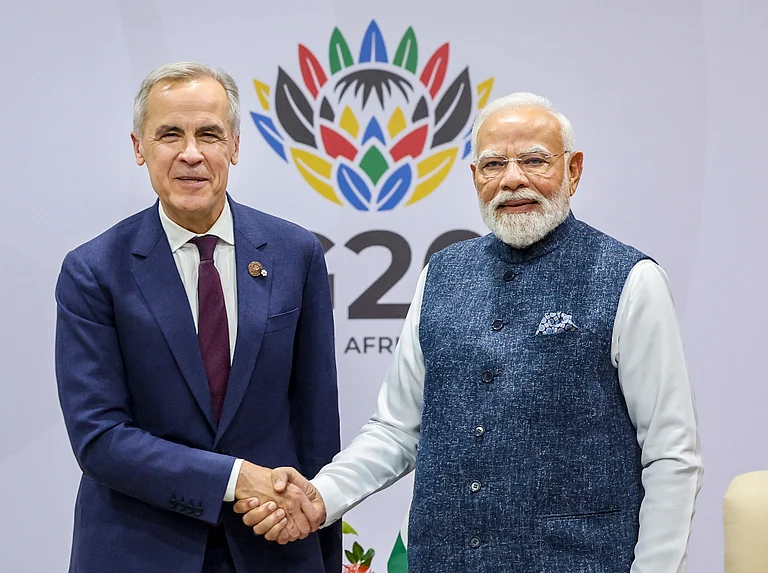India and the four-nation European bloc EFTA on Sunday signed a free trade agreement under which New Delhi has received an investment commitment of USD 100 billion over the next 15 years to facilitate the creation of one million jobs.
The European Free Trade Association (EFTA) members are Iceland, Liechtenstein, Norway, and Switzerland.
The agreement was signed after a gap of almost 16 years as negotiations, started in 2008, but were put on hold in November 2013. Talks resumed in October 2016, and after 21 rounds of negotiations were held before its conclusion.
For the first time in the history of FTAs (free trade agreements), a legal commitment is being made to promoting target-oriented investment and the job creation.
Almost all the domestic industrial goods would get duty-free access in EFTA nations under the agreement, besides duty concessions on processed agricultural products. Switzerland, the major trading partner of India in the bloc, already removed duties from January this year on almost all industrial goods.
On the other hand, India is offering 82.7 per cent of its tariff lines or product categories, which covers 95.3 per cent of EFTA exports of which more than 80 per cent of imports is gold.
On gold, India has not touched the effective customs duty (which is 15 per cent) but has reduced the bound rate by one per cent to 39 per cent.
Bound and applied rates are used in international trade parlance. While bound tariffs or duties refer to the ceiling, the applied tariff is the duty, which is currently in place.
India will also provide duty concessions on certain PLI (production-linked incentive) sectors like pharma, medical devices and processed food.
Sensitivities related to these sectors have been kept in mind while extending offers.
Sectors such as dairy, soya, coal and sensitive agricultural products are kept on the exclusion list, which means there would not be any duty concessions on these goods.
In the services sector, the commerce ministry said, India has offered 105 sub-sectors to the EFTA like accounting, business services, computer services, distribution and health.
On the other hand, the country has secured commitments in 128 sub-sectors from Switzerland, 114 from Norway, 107 from Liechtenstein, and 110 from Iceland. Segments where Indian services will get a boost include legal, audio-visual, R&D, computer, accounting, and auditing.
TEPA (trade and economic partnership agreement) would stimulate our services exports in sectors of our key strength/interest such as IT services, business services, personal, cultural, sporting and recreational services, other education services, and audio-visual services.
Further commitments related to Intellectual Property Rights in TEPA are at the TRIPS (trade-related aspects of IPRs) level.
The IPR chapter with Switzerland, which has high standards for IPR, shows our robust IPR regime.
India’s interests in generic medicines and concerns related to the evergreening of patents have been fully addressed, it added.
It also said that the agreement will empower Indian exporters access to specialised inputs and create a conducive trade and investment environment.
This would boost exports of Indian-made goods as well as provide opportunities for the services sector to access more markets.
TEPA would also provide an opportunity to integrate into EU markets. Over 40 per cent of Switzerland’s global services exports are to the EU (European Union).
Indian companies can look to Switzerland as a base for extending their market reach to the EU.
It will also facilitate technology collaboration and access to world-leading technologies in precision engineering, health sciences, renewable energy, Innovation and R&D.
After signing the agreement, Commerce and Industry Minister Piyush Goyal described the signing as a "watershed moment", as it is India's first modern trade pact with a bloc having developed countries.
He said that for the first time in a trade agreement, EFTA had committed to invest USD 100 billion in the next 15 years.
It would take around a year for the agreement to come into force.
The agreement has 14 chapters, including trade in goods, rules of origin, intellectual property rights (IPRs), trade in services, investment promotion and cooperation, government procurement, technical barriers to trade and trade facilitation.
Prime Minister Narendra Modi said the signing of the trade agreement between India and the four-nation European bloc EFTA is a "watershed moment" as it symbolises shared commitment to open, fair and equitable trade.
"EFTA countries gain market access to a major growth market. Our companies strive to diversify their supply chains while rendering them more resilient. India, in return, will attract more foreign investment from EFTA," Federal Councillor Guy Parmelin, speaking on behalf of the EFTA member states, said.
India had earlier used the strategy of expediting or fast-tracking FTA negotiations successfully with the UAE and Australia.
India-EFTA two-way trade was USD 18.65 billion in 2022-23 compared to USD 27.23 billion in 2021-22. The trade deficit was USD 14.8 billion in the last fiscal.
Economic think tank GTRI Founder Ajay Srivastava said that successfully concluding the pact with developed countries like Switzerland would send a positive signal to the world as it will showcase India's firm commitment to trade liberalisation in a time when the whole world is turning protectionist.






.jpg?w=801&auto=format%2Ccompress&fit=max&format=webp&dpr=1.0)



















